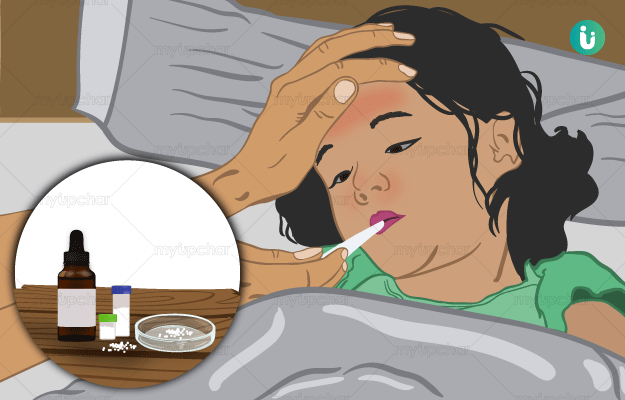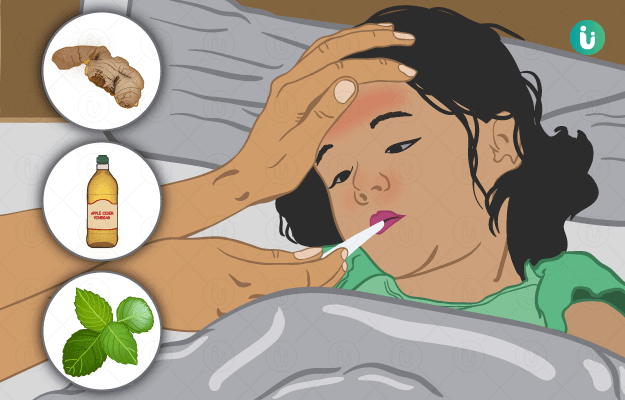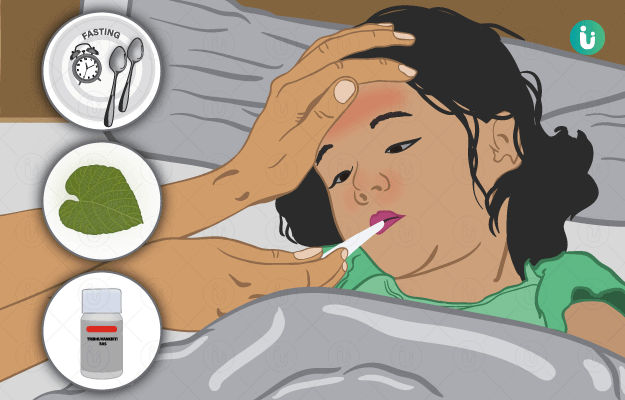Human body temperature is maintained at 37°C or 98.6°F. Fever is a term used to describe an increase in the body temperature by about 1°C. Fever is believed to be the body’s defence mechanism to fight disease-causing pathogens.
There are countless causes of fever. It ranges from simple to complex depending on the causative agent, duration, and type of fever. The metabolic processes in the body are critically temperature dependent and a person’s body temperature rarely varies by more than 1°C from baseline.
Over the counter medicines like paracetamol are effective in reducing mild fever. But if tests reveal an infection then appropriate treatment is needed as per your doctor’s advice.

 Doctors for Fever
Doctors for Fever  OTC Medicines for Fever
OTC Medicines for Fever
 Fever articles
Fever articles

 Ayurvedic Treatment of Fever
Ayurvedic Treatment of Fever
 Home Remedies for Fever
Home Remedies for Fever
 Homeopathic Treatment of Fever
Homeopathic Treatment of Fever

































 Editorial Team
Editorial Team


 Dr. Rachita Narsaria
Dr. Rachita Narsaria

 Dr. Laxmidutta Shukla
Dr. Laxmidutta Shukla













